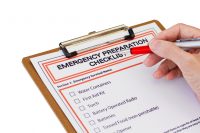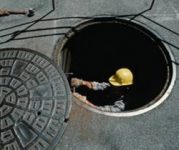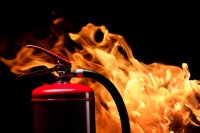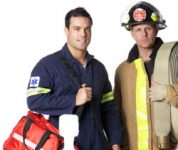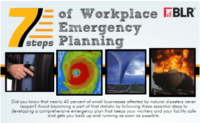Category: Emergency Preparedness and Response
No one wants it to happen, but an emergency, natural or manmade, can strike at anytime, 24/7. What’s more, it need not be a major, nationally-televised incident, such as a hurricane, earthquake, or act of political terror. An event as common as a local building fire can present just as large a challenge to you. These resources will help you create a plan for handling such crises, whatever their scope, and to carry it out in a way that best protects your employees and your company.
When you think of dangerous industries, “retail” is probably not the first one that springs to mind. And while retail employees aren’t generally exposed to the types of machinery hazards that industrial workers face or to the kinds of health hazards that healthcare workers face daily, there are some persistent issues that crop up during […]
At about 9 a.m. on October 4, 2016, contractors were cleaning coal bunkers at the Cambria Cogen power station in Cambria County, Pennsylvania, when an explosion occurred. The explosion injured four workers, two of them seriously—but early news reports stated that three men were taken to the hospital with burns, and little else. Always in […]
One of the most misunderstood portions of the OSHA confined space standard for general industry is the rescue requirement. Many employers don’t manage their confined space entry risks because they fail to adequately assess the hazards and recognize the need for rescue services.
Yesterday we looked at some of the problems that the Occupational Safety and Health Administration (OSHA) identified during the inspection of a United States Postal Service (USPS) facility in St. Louis, where a minor fire could have turned major after workers went through five fire extinguishers before they located one that worked. As is often […]
At the U.S. Postal Service’s (USPS) vehicle maintenance facility in St. Louis, a minor grease fire erupted in a wheel hub on July 3, 2016. Workers trying to put out the small blaze ran into a problem: The first five fire extinguishers they tried to use were not charged.
In the immediate aftermath of an accident, the focus is generally on securing the scene and helping any injured workers, as it should be. But workers who witness the death of a coworker, come to the aid of injured coworkers, or clean up after an accident may find the incident traumatic, too—a response called “critical […]
A recently passed New York state law is intended to better protect employees who are prone to assault. Keep reading to find out who’s affected, and why the Empire State took action.
Concerned about an increase in roadside incidents involving first responders, the U.S. Department of Homeland Security (DHS) challenged companies to come up with research-based solutions. Read on to find out about one winning project that could save the lives of responders as well as civilians.
Recently, one of our subscribers asked the following question: Is there a regulation or standard that requires security officers carrying a weapon to be issued body armor?
September is National Preparedness Month. Is your workplace emergency plan in good shape? Check out our infographic for 7 steps to make sure you’re prepared to keep your workers safe when the unexpected happens. 7 Steps of Workplace Emergency Planning by Safety.BLR.com


